Jet Propulsion Vacuum Style: Rockets
Jet Propulsion Vacuum Style: Rockets
I'm sure you all know about jet propulsion basics. It's coup and contre-coup. That's a fundamental principle in physics.
It was Sir Isaac Newton who found out that "for every action there is an equal and opposite reaction." (Newton's Third Law of Motion). I found a fine compilation of Newton's 3 Laws on the Web. (Hit the back button on your browser in order to come back here.)
 |
Imagine a grasshopper sitting on a piece of driftwood
which is floating in a quiet lake. If the weight of both
the grasshopper and his perch were precisely the same,
the grasshopper might jump from the wood to the
shore, a distance of maybe five inches, discounting any
drag which might be imposed on the wood, the wood will
move in the opposite direction, five inches as well.
Because of their equal weight, both the grasshopper and
the piece of driftwood will move at the same speed at
the beginning, because of friction and water viscosity
the driftwood will slow down soon, though.
Isaac Newton, painting by Godfrey Kneller, 1702 |
In ancient China, rockets had been invented for bringing
fireworks to the sky while experimenting with black powder.
In 1799 British forces came across war rockets in India. William
Congreve introduced them to their arsenal for a couple of years.
Before the end of the 19th century, the idea of leaving the earth for space by means of rockets came up for the first time. Jules Verne in France, Kurt Lasswitz in Germany, and H.G. Wells in England were authors who wrote novels about leaving the planet and enter space.
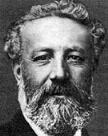 |
Jules Verne, 1828-1905, France |
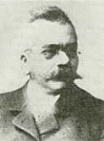 |
Kurt Lasswitz.
1848-1910, Germany |
 |
H(erbert) G(eorge)
Wells, 1866-1946, England. |
The Founding Fathers and Rocketry in the First Half of the 20th Century
Konstantin E. Tsiolkovsky
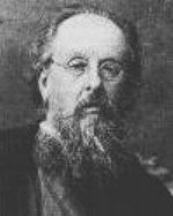 - - |
(1857-1935) was a Russian school teacher who, without ever launching a single rocket himself, was the first to figure out all the basic equations for rocketry - in 1903. Consumed by his passion for the sciences, he tried his hand at fiction and began to write about interplanetary travel. He introduced real technical problems into his writings, such as rocket control in moving into and out of gravitational fields, evolved from fiction writer to scientist and theoretician. Hypotheses and calculations were to follow on a broad spectrum of matters such as escape velocities from the earth's gravitational field; gyroscopic stabilization; the principle of reactive action; and the use of liquid propellants. His "Tsiolkovsky Formula" established the relationships between rocket speed, the speed of the gas at exit and the mass of the rocket and its propellant. |
Robert H. Goddard 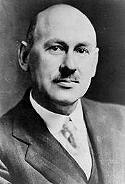 |
(1882-1945) from Massachusetts, one of the fathers of modern rocket propulsion, who envisioned the exploration of space and as a physicist had an unique genius for invention. In 1912 he explored mathematically the practicality of using rocket propulsion to reach high altitudes and even the moon. In 1914 he received a U.S. patent in the idea of a multi-stage rocket. He proved, by actual static test, that a rocket would work in a vacuum In 1926 he shot a liquid fuel rocket, in 1929 he shot a scientific payload (barometer and camera) in a rocket flight. In 1932 he used vanes in the rocket motor blast for guidance and developed a gyro control apparatus for rocket flights. He developed pumps suitable for rocket fuel. In 1937 he launched a rocket with a motor pivoted on gimbals under the influence of a gyro mechanism.In memory of the brilliant scientist, a major space science laboratory, NASA's Goddard Space Flight Center,Greenbelt, Maryland, was established on May 1, 1959 |
|
|||
|
|||
Wernher Von Braun 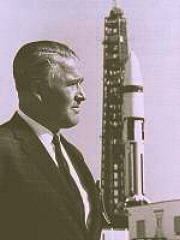 |
(1912-1977) was born in
Wirsitz, Posen (now Poland). After reading Hermann
Oberth's Rocket into Planetary Space, and the gift
of a telescope from his mother, he decided to become a
space pioneer and physicist. Von Braun's natural
leadership and ability to encourage and inspire others led
him, at the age of 16, to organize an voluntary
observatory construction team building a complete
observatory in their spare time. Two years later, he
enrolled at the Berlin Institute of Technology in 1930. In
1932, at the age of 20, he received his bachelor's degree
in mechanical engineering, and was offered a grant
to conduct and develop scientific investigations on
liquid-fueled rocket engines. In 1934, he received his PhD
in physics from the University of Berlin. In the early 1930s Artillery captain Walter Dornberger was searching for a weapon which would not violate the Versailles Treaty of World War I on behalf of the German military. Dornberger was assigned to investigate the practicality of using rockets. He was impressed with Von Braun and hired him to lead the military's rocket artillery unit. A new facility was built at Peenemunde on the Baltic coast. At that time, Hitler had taken over Germany. Von Braun designed and built the A-4, also known as V-2 ('vengeance weapon #2') for the war against Britain, but kept on dreaming of using rockets for going into space. Near the end of the war, after stealing a train with forged papers, von Braun led 500of his staff through war-torn Germany to surrender to the Americans and finally found an American private. Realizing the importance of these engineers, the Americans immediately went to Peenemunde and captured all of the remaining V-2's and V-2 parts, then destroyed both places with explosives. They brought over 300 train car loads of spare V-2 parts to the United States. Much of Von Braun's production team was captured by the Russians, though. (More on Von Braun and his work in the U.S.) |
![]()
Links:
Newton's
Three
Laws of Motion
A Short
History Of Rocketry (Courtesy KSC/NASA)
Konstantin
E.
Tsiolkovsky
Robert
H. Goddard
Hermann
Oberth:
Father Of Space Travel
3rd
Eugen
Sänger Memorial Lecture: The X-15 Program In Retrospect
Eugen
Sänger
(Danish site)
Wernher
Von
Braun